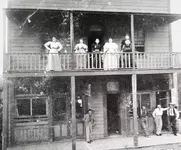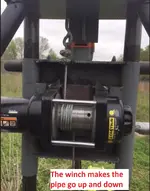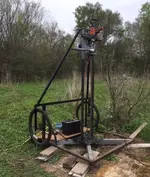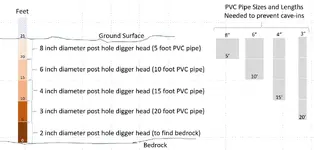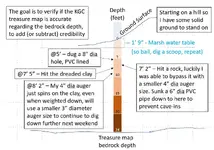barnhse
Full Member
Well...You've really thought this out... I'm glad to see that you do have help!
If you've read anything at all that I've written about Orvus Lee Houk you know I don't believe a word he has ever said. That's just my opinion. I respect others beliefs though and truthfully I'd like nothing more than to be proven wrong about this. I mean that and am wishing you great success.
I'd really like it if you would post updates and photos of your project. You would be the first ever to find and recover a major KGC depository. I'd definitely follow the thread! I'm sure others would too. You Would Make History, That's For Sure!
I do have a question though... How did those safes get to this marshland according to Orvus?
Good Luck and Keep Posting About Your Progress.
Kace
Hi Kace,
The story of how the safes got there is all in that ridiculously expensive book that I referred to in my post before:
https://www.amazon.com/gp/product/0972307265/?tag=treasurenet01-20
The Mysterious and Secret Order of the Knights of The Golden Circle (Volume 1) Paperback – March 1, 2005
by Dr. Roy William Roush Ph.D. (Author)
Using old maps, I researched the path taken by the ships, the gold transfer cities, the path taken by oxen drawn wagons, etc.
All the routes and cities all match up with historical places at the time.
(which Orvus Lee Houk could find on old maps if he wanted to make up a story)
Dynamite was invented in 1867 and was used to blown up a dam that ruined Port Jefferson in 1872.
So *IF* the story is true, the safes must have have been moved prior to 1872, as Port Jefferson was key to the route taken.
I did notice that the type of wood (cypress) mentioned in the story matches up with Caddo Lake State Park (on their path) that is known for cypress wood.
Also I discovered that there was a drought in Texas in 1870... which would probably allow holes to be dug in the marsh land, with the hollowed out cypress logs (that hid the gold in the wagons) used for material to shore up the sides of the hole shafts.
The specific marsh land where am searching also had very strong ties to the Confederacy (per confirmed history) and also had ties to the KGC (as I learned from another respected member of this forum).
Interestingly, I calculated how much weight those oxen team drawn wagons could have reasonably hauled in hot Texas weather.
The weight they could have hauled matches the amount of gold reported in the story (taking into account all the other stuff the oxen would have had to haul... like hollowed out logs, men, supplies).
(you must be really smart or lucky to figure this out if you were making up the story... I am sure Orvus Lee Houk was NOT that smart nor lucky)
This also helped me calculate the smallest dimensions the safes had to be. (3X3X4 feet at least, given the thickness of the safe walls)
I did find a few problems in the story that does worry me.
1) The references to Jefferson Davis seem stupid and unnecessary.
2) One of the cities mentioned on the path was officially incorporated in 1895, although the story *could* have been written after that date.
3) Using block and tackles to lower the safes into the holes seems very hard to believe, as the safes loaded with gold would have been way too heavy, even with oxen doing the work. Seems to me the safes should have been lowered empty first, then filled up a little at a time. Maybe the writer of the story got his information second hand and got some of details wrong (or made some stuff up).
Or, maybe Orvus Lee Houk had access to old maps, knew about the Port Jefferson area, knew about this marsh land somehow, and made up the story/map.
Anyway, I have searched for treasure before and been disappointed, yet lived to search another day.
Last edited:



